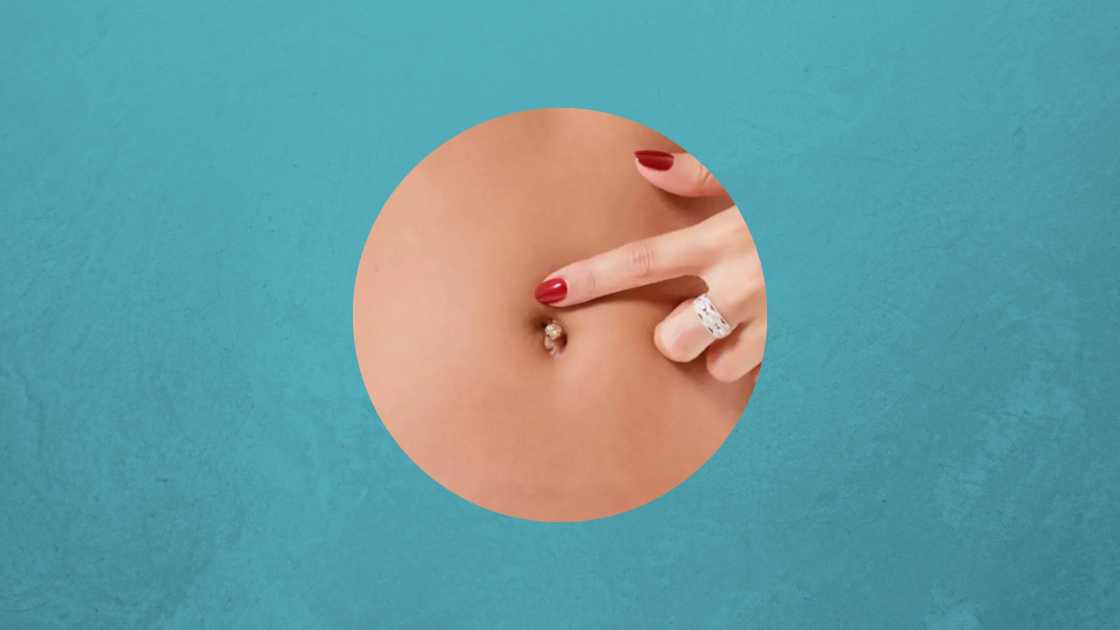The belly button also known as the navel is the scar that showed the connection between you and your mother before you were born. The belly button is a very sensitive part of the body and due to this, it is not advisable to play with it. But why is that so? Why can’t one play with his or her own belly button?
Find out in this editorial piece and make sure to stick around to the end.
What’s left of your old umbilical cord is called a navel or belly button. Where the umbilical cord was once attached is indicated by the belly button.
There are lots of different belly button shapes. Let’s have a look at the common types
Deep hollow
If there is a shadow beneath the top fold of the belly button, a deep hollow belly button will often be visible. This sort of belly button resembles an open mouth. Some members of this group might have a belly button that resembles a “funnel” because they have too much abdominal fat.
Vertical usually narrow)
Because it seems as though a little section of the stomach makes an upward and downward split, some doctors refer to a vertical belly button as having a “split” belly button. The apex of a vertical belly button often has very little hooding and resembles an “I” imprinted in the skin. According to a 2010 article, a vertical belly button is the most typical kind.
Protruding (outie)
“Outies” is a term used to describe protruding belly buttons. According to a chapter in the eBook Umbilicus and Umbilical Cord, approximately 10% of people have an “outie” belly button, while the remaining 90% have an “innie.” When the residual section of the stump where your umbilical cord was linked goes out instead of in, this is known as an outie.
Light bulb
A belly button that resembles a light bulb has very little hooding on the top and a somewhat oval form that gets narrower as it descends. Some people also liken a belly button shaped like a light bulb to a beer or wine bottle that is turned on its side.
Round
Although it’s not quite an outie belly button, a round belly button is similar. Concave or projecting inward is still present in a circular belly button. However, it lacks any hooding or covering and instead has a symmetrical circular appearance.
Horizontal (usually narrow)
A horizontal belly button, also referred to as a T-type belly button, has the majority of the belly button fold running horizontally. There may be a depression at the top of the belly button that resembles a “T” line. Because the top layer of skin almost entirely encloses the innermost part of the belly button, this belly button type differs from a deep hollow belly button.
The first reason you shouldn’t play with your belly button (navel) is that it could get infected. This is especially true for women who have had their belly buttons pierced.
The same is true if you recently had any procedures performed near your navel. It’s recommended to refrain from playing with your belly button entirely because there is a larger chance of infection if there is any kind of wound in the area.
There are various dangers involved in playing with your navel, which is another reason why you shouldn’t. For instance, did you know that our bodies are home to bacteria? Likewise, neither can you touch them nor even see them with your eyes. This implies that if the skin around your navel is punctured, it could allow those bacteria to enter your bloodstream and result in an infection.
Summary
You shouldn’t play with your navel because there are several risks associated with it. For instance, did you know that germs live inside our bodies? Similarly, you cannot even see them with your eyes or touch them. This implies that a puncture to the skin near your navel can allow those bacteria to enter your bloodstream and cause an illness.
Therefore, you should try as much as possible to avoid playing with your belly button.
Frequently asked questions (FAQS)
Your navel may be infected if it starts to itch, swell, become red, or become sore. If this occurs, you should get medical help right away. The sooner you get to treat the infection, the greater your chances are of recovering from it.
It could take from a few days to a week or more for an infection in your navel to entirely clear up. If your body exhibits symptoms of an illness that is currently active, you may need antibiotics (such as fever).
Depending on the severity of your symptoms and the particular type of bacteria that caused the problem, your doctor will prescribe them.
The uterus may exert more pressure on the belly button during pregnancy. A belly button can become an “outie” under more strain because it is essentially a weak spot in the abdomen. However, when a woman delivers a child, this phenomenon typically reverses.
After giving birth, some women do realize that their belly button has changed. According to a 2010 report, the belly button will typically appear “shorter” or less vertical. The belly button could also look bigger or more horizontal.
There are several plastic surgery techniques that might help you get a belly button that looks more attractive. Your current belly button being changed by a surgeon is referred to as an umbilicoplasty.
They undertake a treatment known as a neoumbilicoplasty to construct a new belly button if you were born without one or had surgery to remove one later in life.
This treatment can be carried out by doctors under either local or general anesthesia. Local refers to when you’re awake; generally refers to when you’re asleep.
Your doctor should carefully go through your objectives with you and explain how having surgery may modify the size, shape, or position of your belly button.
You might have a bacterial, fungal, or yeast infection if your belly button is “leaking” clear or colored discharge or blood. Other indications of infection include redness, itching, crusty skin, and unpleasant odors. After washing your belly button, if any crust or discharge remains, you should consult a doctor.
The majority of belly buttons have an indent so they can collect sweat, dead skin, and grime. Germs can grow because few people wash their belly buttons with soap.
Poor hygiene is the most frequent cause of belly button odor. To stay clean and healthy, it’s important to wash every part of the body frequently.
Trillions of naturally developing, typically harmless microorganisms that live on the skin.
Skin creases around the belly button provide a habitat for bacteria to flourish. The majority of these bacteria are low-level and do not produce odors. However, if germs build up too much, they could produce a bad or irritating odor.







Leave a Comment